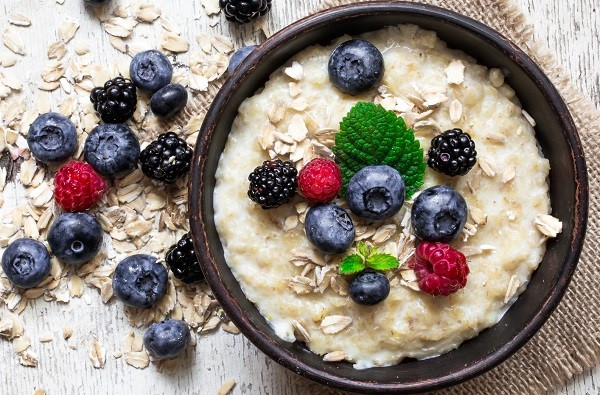October 7, 2020
Malnutrition Awareness Week
October 5-9, 2020 is Malnutrition Awareness Week.
The rate of malnutrition is highest in adults age 65 and older. Malnourished patients have hospital stays that are two times longer than patients who are not malnourished, and a 1.6% higher readmission rate. Malnourishment can cause weight loss, which can lead to muscle loss, an increased risk for falls, decreased bone mass, poor wound healing and more.
A healthy, balanced diet can help to prevent malnutrition. Here are some tips to help keep you on track with your nutrition goals.

Eat More Fruits and Vegetables
- Fresh, frozen or canned (low sodium) vegetables are all great choices. Try them steamed, roasted, grilled, boiled or however you enjoy them!
- Enjoy a variety of fruit with your meals, in place of dessert or as a snack throughout the day.
Goal: Fill ½ your plate with fruit and vegetables at dinner time.
Get Plenty of Protein
- Beans and lentils are great on salad, mixed into soup or added as a side to your meal.
- Nuts and seeds make a great snack. Peanut butter works well mixed into oatmeal or smoothies or spread on toast.
- Lean meats, poultry, eggs and fish are all good sources of protein. Egg salad and tuna salad make for easy mid-day meals that are rich in protein. Bake, broil or grill meat, fish or poultry for a heart healthy meal.
Goal: Fill ¼ of your plate with protein rich foods.
Choose Complex Carbohydrates
- Try sweet potatoes, red, Yukon gold, russets or any type you enjoy.
- Choose whole grain pasta and bread, brown rice and oatmeal.
- Add a serving of corn, peas or winter squash to your meal.
Goal: Fill ¼ of your plate with complex carbohydrates at dinner time, more if you are trying to gain weight.
Note: To maintain balanced blood sugar, pair ½ cup of beans or lentils with high carbohydrate foods.
Healthy Fats
- Unsalted Nuts and Nut Butter. Eat a few handfuls of nuts throughout the day between meals or enjoy a serving of nuts with fruit for a snack.
- Olive oil. Drizzle olive oil over a salad or vegetables. Add olive oil to pasta, rice or potatoes
- Eat mashed avocado on toast for breakfast, add it to smoothies, enjoy guacamole as a dip for vegetables, or add sliced avocado to tacos, burritos or sandwiches.
Goal: Add healthy fats as a garnish to your meal. Add more if you trying to gain weight.
Looking to gain weight?
- Have Food Ready. It is important to have something that you can easily heat up or assemble to make meal and snack time more convenient. A handful of nuts or trail mix or toast topped with peanut butter are easy snacks. Pre-made egg, tuna or chicken salad in the fridge makes for a quick sandwich option. Ask friends or family to help with meal prep when you’re not feeling up to the task and speak with your dietitian about healthy frozen meals.
- Eat Regularly Throughout the Day. Eat every two to three hours. Even if you’re not feeling hungry, try to have a small plate of leftovers or an easy snack. Setting a timer can be a helpful reminder to eat throughout the day.
- Don’t Drink Water at Mealtime. This can cause you to fill up quickly and miss out on the calories from eating a meal or snack.
- Move More. Getting some exercise can help to stimulate your appetite. Try moving more to help increase your calorie intake.
- Try Smoothies. Make high calorie smoothies or consider oral nutrition supplements such as Boost or Ensure if you’re not able to get the calories you need from food. Speak with your dietitian to see what is right for you.
Take it one step at a time. It can feel overwhelming to take too many steps at once. Pick one thing per week you want to try and build from there.
If you are struggling to maintain your nutrition goals, your Landmark provider can refer you to a Landmark dietitian and/or connect you with community resources such as food banks that offer home deliveries. Please reach out to your Landmark team with any questions.




